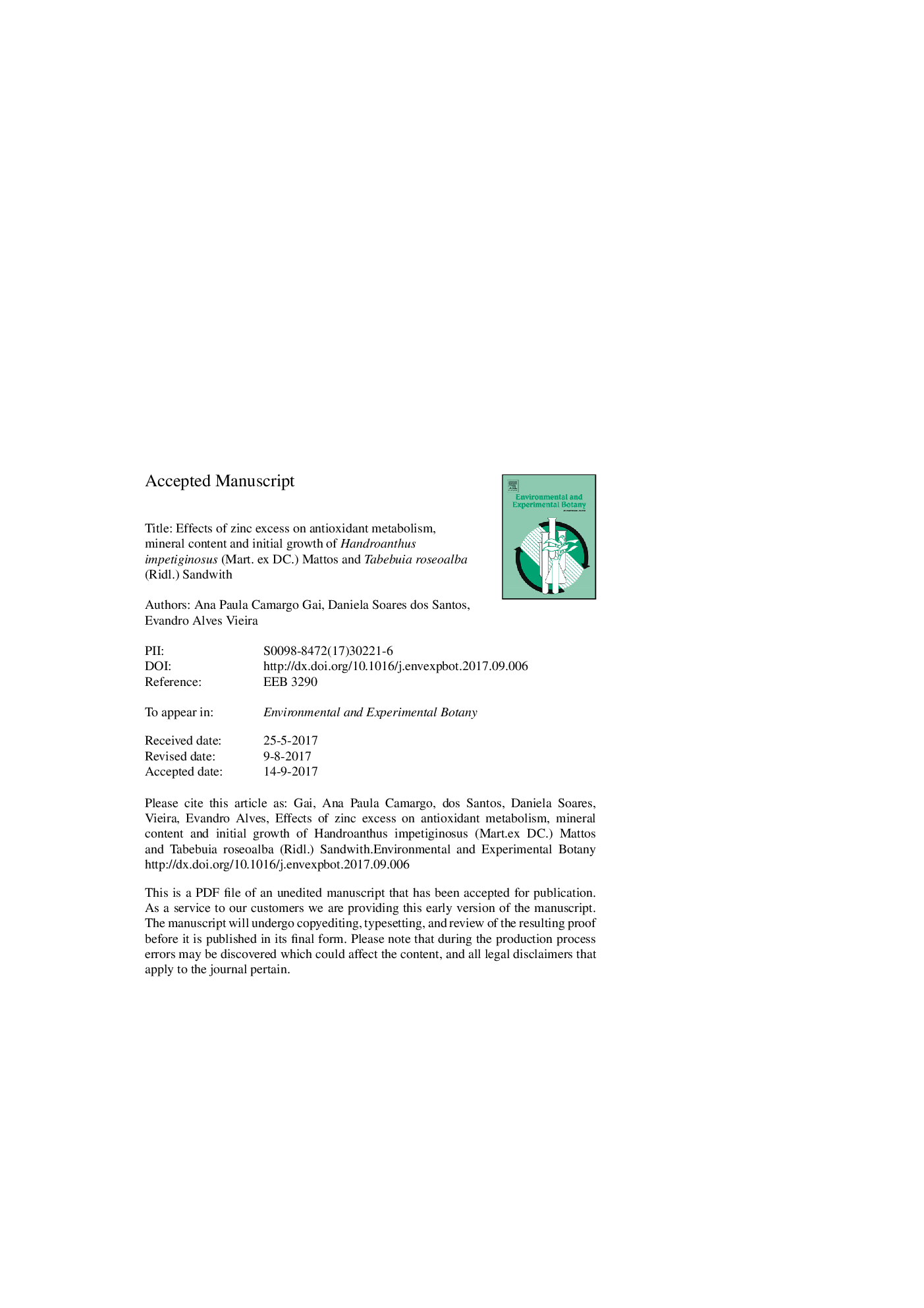| Article ID | Journal | Published Year | Pages | File Type |
|---|---|---|---|---|
| 8887159 | Environmental and Experimental Botany | 2017 | 39 Pages |
Abstract
Zinc (Zn) participates in numerous metabolic processes in plants under normal concentrations. In polluted environments, plants can develop different strategies to cope with Zn excess. Zinc stress can alter the photosynthetic metabolism and increase the production of reactive oxygen species (ROS). Therefore, this study aimed at evaluating the zinc tolerance of Handroanthus impetiginosus (Pink Ipê) and Tabebuia roseoalba (White ipê) under greenhouse conditions. We assessed the effects of different Zn concentrations on photosynthetic performance and maximum quantum yield (Fv/Fm), pigment concentrations, antioxidant enzyme activities, content of macro and micronutrients in the tissues and growth parameters. Both species showed different strategies to tolerate Zn stress. Pink ipê plants accumulated larger amounts of zinc in the roots without showing severe damage in the aerial parts. Meanwhile, White ipê plants mobilized Zn to the aerial parts and showed less accumulation in the roots, with major effects on leaves. Growth was negatively affected in both plant species, which was evidenced by the decline in photosynthetic rates, most likely due the adverse effect of Zn on the electron transport chain. Upregulation of photoprotective mechanisms such as the increase in anthocyanin content and activities of antioxidant enzymes minimized the H2O2 content and oxidative damage in the leaves. A decrease in nitrogen content in stems and leaves and in phosphorus and potassium concentrations in roots were observed especially in the White ipê plants. Our results demonstrated that roots and leaves of Ipê plants accumulate high concentrations of Zn, which evidences the potential of these species as candidates for bioremediation in Zn-polluted Cerrado areas.
Keywords
Related Topics
Life Sciences
Agricultural and Biological Sciences
Ecology, Evolution, Behavior and Systematics
Authors
Ana Paula Camargo Gai, Daniela Soares dos Santos, Evandro Alves Vieira,
